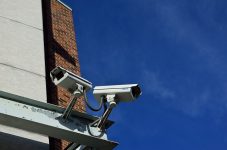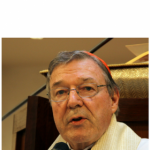The Expert Must Be Right! Expert Witnesses and the ‘White Coat’ Effect

Expert witnesses are routinely called by both the defence and prosecution in defended hearings and jury trials.
They play a valuable role in criminal proceedings by providing professional opinions about particular facts that may be in dispute.
Evidence obtained from experts can influence how jurors perceive the actions of the defendant, and may consequentially have a significant bearing on the ultimate outcome of the case.
Legal rules impose onerous restrictions on the type of evidence that can be admitted, and expert evidence is no exception.
For expert evidence to be admissible, it must be shown that the expert in question has specialised knowledge based on their training, study or experience, and that their opinion is based on that knowledge.
Experts may therefore come in many forms – forensics experts, accident investigators, psychiatrist, specialist doctors, engineers – the list is virtually endless.
However, research suggests that the value of expert evidence in jury trials may be greater than the actual probative value of the evidence.
Specifically, it suggests that jurors may fall victim to the ‘white coat’ effect, whereby they place greater weight on evidence given by experts due to their expertise, even in the absence of any other conclusive evidence.
This is often complicated by the fact that experts often use technical terms when explaining complex concepts to ordinary members of the public.
Whilst this language may sound impressive, it can confuse jurors and lead them to wrongly convict defendants on the basis of limited evidence, resulting in a miscarriage of justice.
The recent case of Honeysett v The Queen highlights the dangers of expert evidence.
The case involved an armed robbery on a Northern Beaches hotel.
Mr Honeysett was accused of being involved in the robbery – but there was very little evidence to prove his involvement.
Although CCTV footage captured the incident, the person who was alleged to be Mr Honeysett was conspicuously dressed, making it difficult for witnesses to identify him.
His body was completely concealed beneath heavy clothing, and his face was also covered up.
Rather than relying on conflicting eye-witness evidence, the prosecution sought to rely on the evidence of a Professor Henneberg.
Professor Henneberg works at the University of Adelaide in the field of anatomy and biological anthropology.
His expertise allows him to describe and identify people based on the characteristics of their body, such as their shape, size, skin colour and weight.
At trial, Professor Henneberg was shown images captured from the hotel’s CCTV footage.
He was then asked to compare the characteristics of the person depicted in the CCTV footage with those of Mr Honeysett.
He gave evidence in court that the person in the CCTV images had an ‘ectomorphic’ (thin) body type, was right handed and also had a darker skin tone. Based on these observations, he found that there was a ‘high degree of anatomical similarity’ between the person in the footage and Mr Honeysett.
The court allowed this evidence to be admitted on the basis of Professor Henneberg’s ‘specialist knowledge,’ and Mr Honeysett was found guilty – despite the otherwise weak case against him.
Mr Honeysett’s defence team was not satisfied.
They argued that, because Professor Henneberg specialised in identifying persons from 3D images, and the CCTV images were two-dimensional, the Professor’s opinions were not based on his specialised knowledge and should not have been admitted.
The case went all the way to the High Court where the Justices agreed with the defence, finding that ‘Professor Henneberg’s evidence gave the unwarranted appearance of science to the prosecution case.’
Essentially, the Court found that the descriptions and comparisons provided by Professor Henneberg were no different to those that an ordinary person could have given – yet because of Professor Henneberg’s professional qualifications and knowledge of technical terms, the danger was that his evidence was construed as more accurate because he was presented to be a specialist.
Accordingly, the High Court ordered a retrial.
Although this is just one example of the problems with expert evidence, legal commentators say that such problems are common and that more needs to be done to regulate the types of expert evidence that can be admitted.
Specifically, it is argued that ‘specialised knowledge’ should be more strictly defined so as to require experts to demonstrate that their evidence is reliable, statistically accurate or scientifically valid.
This approach has already been considered in other countries, including England and the United States.
It may also impose stricter standards regarding qualifications and experience of people seeking to be expert witnesses.
Sadly, the High Court in Honeysett did not provide explicit guidance as to what constitutes ‘specialised knowledge.’
It therefore seems that criminal lawyers will continue to bear the responsibility of questioning the validity of expert evidence, which is not ideal and can lead unfair outcomes and a lengthy and expensive appeals process.
From a defence perspective, the current approach benefits the prosecution due to the fact that it has enormous resources when it comes to prosecuting jury trials – often calling (and paying for) half a dozen expert witnesses from various fields.
In contrast, most defendants can barely pay for the basic costs of a trial – let alone afford several expert witnesses, or an appeal.
While there is a strong argument for reform, it remains to be seen if and when change will actually occur.






